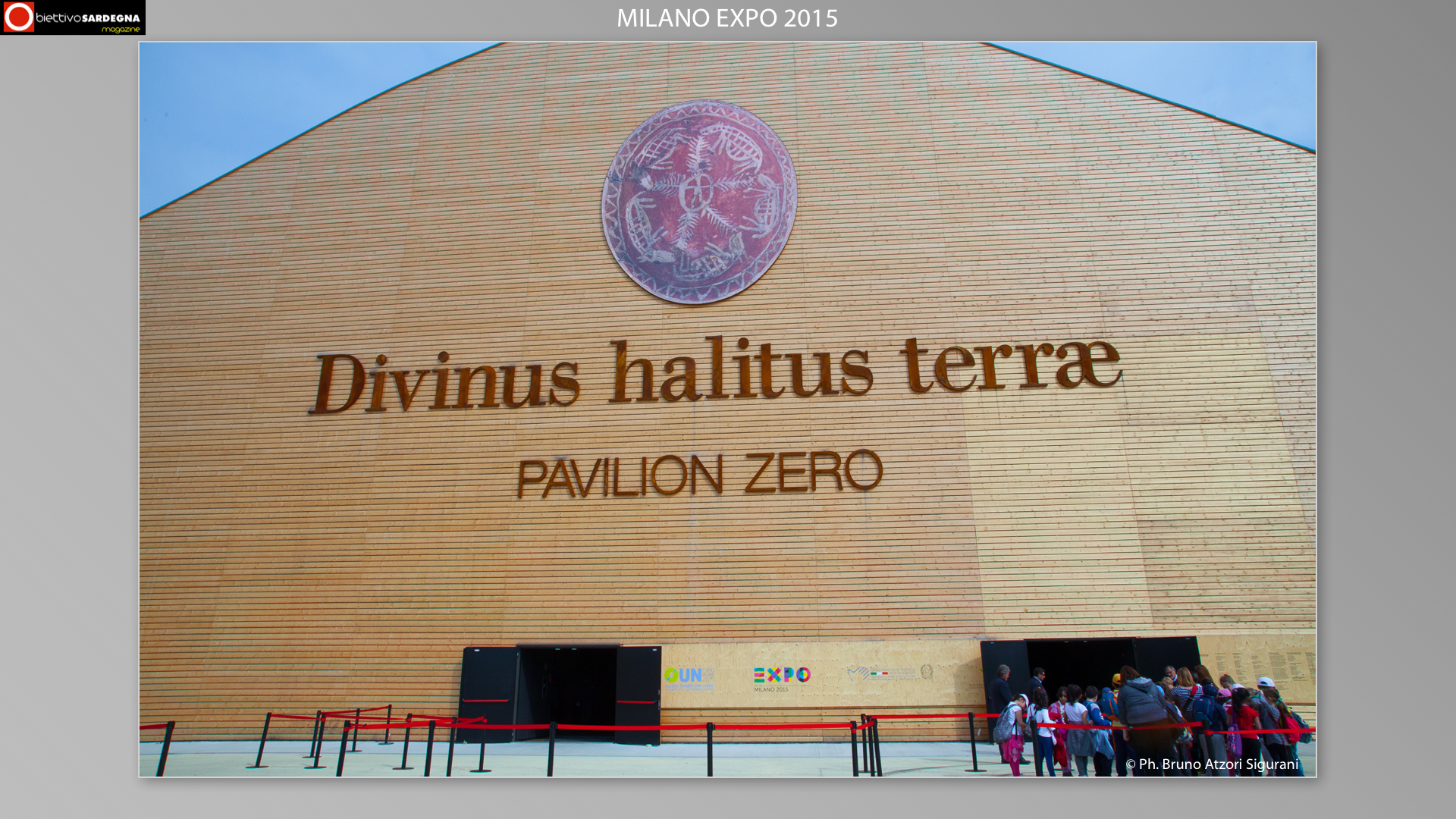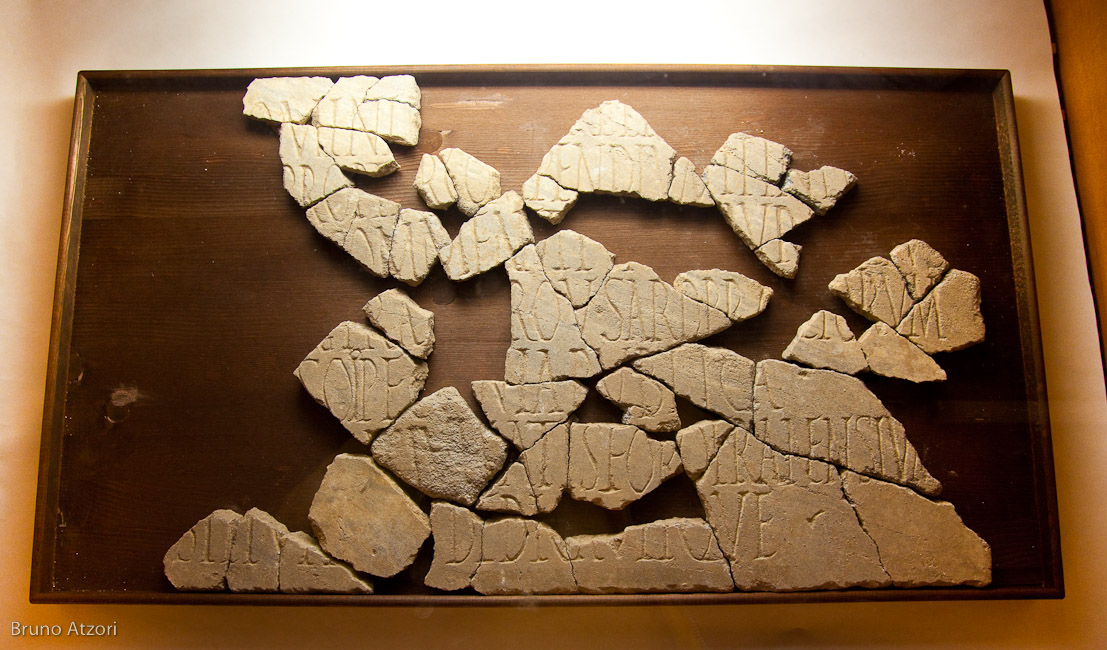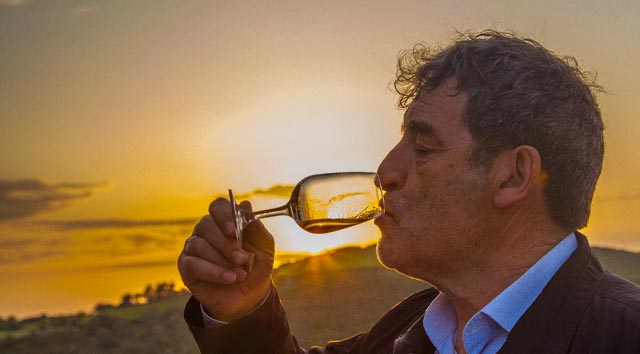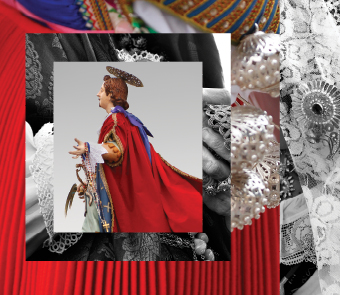GEORGE BENSON
concerto
» Oristano, Piazza Cattedrale | 27 luglio, ore 22.00

George Benson: Guitar, Vocals
David Garfield MD: Piano, Keyboards
Michael O’Neill: Guitar, Vocals
Teddy Campbell: Drums
Stanley Banks: Bass
Thom Hall: Keyboards
Ingresso 28 € (compresi d.p.) – info e biglietti
Musicista statunitense, ha cominciato la propria carriera all’età di 21 anni come chitarrista jazz. Benson, tuttavia, è noto presso il grande pubblico soprattutto come cantante di musica pop e R&B grazie a dei grandi successi tra cui Give Me The Night, Lady Love Me (One More Time), Turn Your Love Around, In Your Eyes, Love X Love, Being With You e This Masquerade. George Benson è ricordato dai jazzofili anche come abile utilizzatore dello “scat”, una tecnica che permette di creare vocalizzi che imitano gli assoli jazz suonati con la chitarra.
George Benson è nato e cresciuto nel Hill District di Pittsburgh, (Pennsylvania). Inspirandosi ai due leggendari chitarristi Wes Montgomery e Charlie Christian, cominciò la propria carriera musicale suonando come chitarrista nella formazione jazz dell’organista Jack McDuff con il quale collaborò per svariati anni. Grazie ad un accordo con l’impresario talent scout John Hammond, all’età di 21 anni, Benson incise il suo primo album, The New Boss Guitar, ancora una volta con Jack McDuff all’organo, per la casa discografica Columbia Records (1966-1967). Il lavoro successivo fu It’s Uptown with the George Benson Quartet con Lonnie Smith all’organo e Ronnie Cuber al sassofono baritono. Questo album mette in luce il talento di Benson nella costruzione di linee melodiche ricche di swing e bebop. Benson proseguì con The George Benson Cookbook, sempre assieme a Lonnie Smith e Ronnie Cuber. Negli anni successivi, Benson collaborò con vari artisti come Miles Davis (nell’album Miles in the Sky, nel quale George accompagna con la chitarra elettrica il brano Paraphernalia), Herbie Hancock e Jimmy Smith. La pubblicazione dell’album Giblet Gravy coincise con il passaggio alla casa discografica Verve Records (1968-1969). Negli anni successivi cambiò ancora, prima alla A&M (1969-1970) e poi alla CTI di Creed Taylor (1970-1975).
Grazie ad un nuovo contratto con la Warner Bros e la produzione di Tommy LiPuma, arrivò la svolta, con l’album Breezin’, nel 1976. Breezin’ ed il suo singolo This Masquerade ebbero tale successo da far guadagnare il Grammy Award a George Benson, che con questo album riuscì ad immergere l’ascoltatore in sonorità estremamente sofisticate, venendo alla luce anche quale cantante di grande valore. E sono questi gli anni in cui il nostro, a seguito delle innovazioni intervenute nel campo dell’amplificazione, mise a punto le caratteristiche che secondo lui una chitarra da jazz avrebbe dovuto avere: sulla scorta di altri blasonati modelli di semiacustiche americane prese così forma la Ibanez GB 10, che, rispondendo a specifiche modifiche di Benson e grazie alla qualità finale, è diventata un classico, ancora in produzione dopo oltre 30 anni, seppur affiancata da numerose sorelle. Nel 1979 uscì l’album doppio Livin’ Inside Your Love che lo consacrò al successo definitivo. In questo periodo registrò anche la canzone The Greatest Love of All, per il film The Greatest con Muhammad Ali, che non fu subito apprezzata, ma successivamente cantata da Whitney Houston arrivò in vetta alle classifiche. Sempre nel 1979 per il film All That Jazz di Bob Fosse, vincitore di 4 premi oscar e Palma d’oro al Festival di Cannes, Benson compose la famosa canzone On Broadway, che venne inserita nella colonna sonora del suddetto film. Pur rimanendo nella stessa casa discografica, per l’uscita del nuovo album Give Me the Night, nel 1980, la produzione cambiò e venne affidata a Quincy Jones. Questo disco, nonostante una vena più pop e delle sfumature quasi disco della title-track, grazie anche alla collaborazione di altri noti artisti jazz, nonché del “songwriter” Rod Temperton (in seguito dietro a successi quali Thriller di M. Jackson), gli accreditò altri Grammy Awards, rendendolo ancora più popolare. In questi anni Benson si ritrovò a duettare con famose star quali Aretha Franklin e Chaka Khan, sotto la produzione di Arif Mardin, e partecipò ai più importanti Jazz Festival mondiali. Fino alla metà degli anni ’80, la sua carriera proseguì con un successo dietro l’altro pubblicando album quali In Your Eyes e 20/20; 3 brani di questo periodo restarono nelle prime posizioni in molte hit parade internazionali e successivamente i lavori discografici di Benson ricalcarono le sonorità della musica di grande diffusione radiofonica del momento.
Nel 1987, sempre con la produzione di Tommy LiPuma, venne pubblicato l’album Collaboration nel quale Benson alla chitarra elettrica e Earl Klugh a quella classica suonarono in una fusione sonora. Insieme alla Count Basie Orchestra, sulla base della promessa fatta al suo fondatore di rendere giustizia alla sua musica, nel 1990 esce un album che ne ricalca lo stile ed in cui Benson mette il suo sigillo componendo in dedica la traccia Basie’s Bag. Con la nomina di Tommy LiPuma alla presidenza della Verve Records, nella metà degli anni novanta, George Benson dopo anni trascorsi alla Warner Bros. cambia etichetta passando alla casa discografica GRP/Verve, con la quale vengono pubblicati album del calibro di Absolute Benson, in cui è evidente l’intenzione di recuperare lo stile dei suoi vecchi tempi. Nel 2004 esce l’album Irreplaceable dove cerca di farsi apprezzare anche dal pubblico giovanile (un brano si intitola Cell Phone), pur rimanendo nei confini del suo stile chitarristico e compositivo. L’ultima produzione discografica esce nell’ottobre del 2006, si intitola Givin’ It Up ed è condivisa con il cantante Al Jarreau: è un album ancora una volta registrato con l’apporto di musicisti ed ospiti importanti, in cui i due duettano magistralmente scambiandosi continui omaggi e consacrandosi grandi mostri sacri della scena musicale mondiale.
Testo tratto da Wikipedia (http://it.wikipedia.org/wiki/George_Benson)
Biography
Appreciated as both a musician and performer by millions, George Benson has always had the dual role of expert improviser and vibrant entertainer. He has consistently placed his keenly discerning art in the service of a rousing good time. Rounding out his singular approach with sly, seductive rhythm and blues, he’s earned himself an impeccable reputation as one of music’s most enterprising and engaging stars.
Few might have predicted that striking level of stardom some forty years ago, when Benson was a fledgling guitarist working the corner pubs of his native Pittsburgh. That’s where his yen to please a crowd was born. “I was an entertainer first,” he says proudly “As a kid I sang, danced, and played the ukulele in a nightclub. As my career has progressed, I’ve had the pleasure of playing with the baddest jazz cats on the planet. But that doesn’t change my desire to entertain folks. That’s really who I am.”
It was Wes Montgomery, one of jazz’s most creative players, who came across Benson early on; the vet complimented the young guitarist, urging him to continue his already impressive work. In the early 1960s, Benson apprenticed with organist Brother Jack McDuff; he found the organist’s gritty swing a fertile ground for the sly, confident, and adventurous guitar lines, which earned him an early rep as a master.
“Jack turned me on to a lot of stuff,” muses Benson. “A lot of the jazz tunes we played together were danceable, and that furthered my understanding of what people wanted. When jazz was danceable, it was king. The intellectual stuff that came later on—Charlie Parker and all that—turned toward a brainier sound. That was good, and I dug it. But I really like when people kick up their heels and go crazy.”
Montgomery had called one of his best records Boss Guitar. Benson had both the conviction and chops to nip at his hero’s heels; his 1964 debut was released as The New Boss Guitar. It lived up to its title. Benson’s tone was juicy, and his blues solos sparkled with a carefully honed logic. A jaunty funk and swing aesthetic prevailed.
By the time legendary talent scout John Hammond signed Benson to Columbia, the guitarist’s name was bubbling throughout the industry. His work for the label proved Hammond’s hunch to be on-target: brains and flash were in perfect synch.
“I’d sat down with a great blind pianist from San Francisco name Freddy Gambrel,” recalls Benson. “He turned me on to some wonderful ways to get in and out of chord changes and weld harmonies together. Of course I still wanted to be like Charlie Christian, Django Reinhardt, and Hank Garland—my heroes. I’ve always liked the hot guitar guys.”
Playing the combination won Benson access to all sorts of arenas. His work was boundless: in the late ’60s he sat in on heady Miles Davis sessions, and also put a personal spin on the tunes from the Beatles’ Abbey Road.
Hooking up with the CTI label in 1970, he was united with many of jazz’s finest instrumentalists, including Stanley Turrentine, Ron Carter, and Freddie Hubbard. His visibility and prestige grew even further. Classic albums, such as Beyond the Blue Horizon, abounded. But after a while different ideas began to flow from Benson’s muse. And the environment didn’t seem right for growth.
“I’d been screaming about my guitar sound for years, and they didn’t want to hear about it. I wanted to use my band in the studio, just get comfortable and test out some stuff. But it was like pulling teeth. The first time I tried to sing along with my guitar, everybody in the studio booed. They all said that it wouldn’t work. When I got with Tommy LiPuma all that changed. He said ‘Sure, let’s go with some vocals, see where we get.’ And you know what happened after that.”
What happened was Breezin’, the first jazz record to attain platinum sales. The 1976 blockbuster, his first in a long association with Warner Bros. Records, brought the instrumental title track to jazz radio. And Benson’s soulful update of Leon Russell’s “This Masquerade,” which featured the guitarist scatting along with his solo break, was a pop smash. He followed up with many pop hits, including a sultry version of “On Broadway” and the irresistible “Give Me The Night,” which thrilled many a dancer. Benson was a superstar.
Some old fans were miffed about this new pop success. “I guess that’s the biggest crime I’ve made as far as jazz lovers go,” offers Benson. “They don’t always like to see you play for the general public. They want to be catered to. But I’ve tried that approach and it doesn’t work for me. Nobody can stay one way for 30 years. I’ve always tried to let my experience show itself. You learn, you change. The door opened and I walked through it.”
Throughout the 1980s, Warner Bros. and LiPuma followed their smash success with several terrific Benson records. Individually, they blended grooves and guitar work, proving that R&B was a natural part of Benson’s profile. Collectively, they cemented his global renown. The guitarist has won ten GRAMMY®s, played around the world, and thrilled many crowds with his playing.
In the mid-’90s Benson followed LiPuma to the GRP label. Their association had proven artistically and commercially fertile; both wanted to sustain it. Together they cut the 1996 gem That’s Right. It offered a modern version of contemporary jazz that reminded its listeners Benson was one of the genre’s forefathers.
These days Benson’s interests are many. He’s often spotted out at Manhattan jazz clubs, checking the action of fledgling guitarists. The most impressive of the lot are sometimes invited back to Benson HQ for jam sessions and stylistic powwows. The guitarist is resolute about keeping the sparkle in his playing.
“The younger cats awaken something in me from the early days,” says Benson, “I love listening and playing with guys like Joshua Redman, Roy Hargrove, and Christian McBride. When they tell me I’ve still got the chops, I feel great.”
Benson followed That’s Right with Standing Together, also on GRP. The album assured that his chops were sharper than ever, as he used elements of hip-hop and Caribbean rhythms to keep his personalized R&B on the edgy side.
“I’m not against ear candy,” he chuckles, “but I like mine to be significant, not just noises in the record. Some of those backing tracks we used are cool. They gave me little tidbits of sound to bounce my guitar lines off of.”
On Absolute Benson, he surprises us once again by emphasizing instrumental music. Only three of the album’s tunes feature any vocals, so his distinctive guitar playing takes center stage. Blending jazz with R&B and blues, Absolute Benson aims for accessibility and recalls Benson’s albums of the early-to-mid 1970s. Absolute Benson illustrates Benson’s virtuosity without sacrificing his commitment to the groove, the beat, and the melody.
Unfazed by the constrictions of predictability, he’s built a career on sniffing out what people enjoy hearing, and what he enjoys playing.
“I had to break a couple rules along the way,” he reflects. “There was an unwritten law: be cool, don’t get too raunchy. But jazz was once hanging-out music. And the easiest way to involve people is by getting ‘em tapping their feet. When they’re tapping a bit, they’ll go your way. That’s when I can float any kind of jazz line into the music. Once the audience knows I respect them, they let me be whatever I want to be. I hope..no, I firmly believe, that will always be the case.
On the album Irreplaceable he marks a directional shift back to silky sexy soul music…with a decidedly contemporary urban edge. “I’m just trying to wake some people up,” Benson says with the confident patois of a Pittsburgh hipster, “give them something that they wouldn’t expect. Just like in `76 when I recorded Breezin’ and everybody expected instrumentals at 8,000 notes per second like I’d done in the past. I dropped a vocal, ‘This Masquerade,’ on `em instead! So, we’re coming in strong from the left this time. When the DJ says, ‘That was George Benson,’ folks will be like, `What?’ They’re not gonna believe it…and that’s what we want.”
Per informazioni:
DROMOS
via Sebastiano Mele 5/b
09170 Oristano (Sardegna)
Tel. 0783 310490 begin_of_the_skype_highlighting 0783 310490 end_of_the_skype_highlighting – Fax. 0783 310557
www.applausi.com
www.dromosfestival.it – dromos@dromosfestival.it






